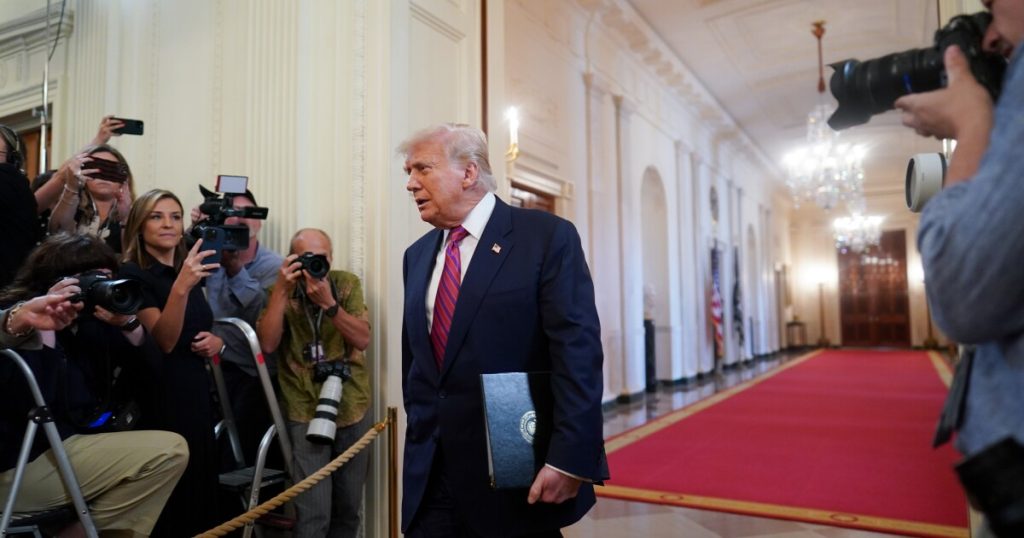Bloomberg News
WASHINGTON — President Donald Trump signed the stablecoin bill into law, marking a major win for crypto interests in Washington.
The act “creates a clear and simple regulatory framework to establish and unleash the immense promise of dollar-backed stablecoins,” Trump said at the signing ceremony on Friday. “This could be perhaps the greatest revolution in financial technology since the birth of the internet itself.”
The signing represents a power shift for the financial services sector in the White House and in Congress. Crypto interests triumphed in the stablecoin bill after spending millions on the 2024 elections. And while some large banks are enthusiastic about the possibility of stablecoins, community bankers highlighted to lawmakers throughout the process
“In addition to introducing a new method of transferring value, stablecoins also have the potential to disintermediate core commercial bank activity like deposit taking and lending,” the American Bankers Association said in a new letter to House leadership on Thursday. “This concept is not a mere competitive concern; rather it could pose significant risk to the fundamental role banks play in credit intermediation.”
State regulators also outlined concerns to lawmakers about state-chartered, uninsured banks being able to bypass the rules of other states as they expand.
The Conference of State Bank Supervisors said in a statement Thursday that the group would work with Congress in the future to adjust the law, “which would prevent host state approval and supervision of the money transmission and custody activities of uninsured banks with payment stablecoin subsidiaries — a dramatic intrusion on state authority that is unnecessary and unrelated to the purpose of the legislation.”
The GENIUS Act
Under the bill, federally insured depository institutions can issue payment stablecoins under oversight from their primary federal regulators. Nonbank companies can also participate in the market, but they must obtain approval from the Federal Reserve and meet specific reserve, redemption, and risk-management standards.
Many aspects of the law won’t be phased in for three years after today, and regulators have a lot of work in the year ahead to complete required rules to implement the law.
Bank regulators will have to set out the rules of the road for banks, which are expected to be friendly toward the crypto industry.
“The OCC is prepared to work swiftly to implement this landmark legislation that expands the authority of the OCC to include nonbank payment stablecoin issuers,” said Comptroller of the Currency Jonathan Gould in a statement. “The OCC is poised to support the dynamic business of banking as it continues to evolve, and to lead U.S. banking policy into the future to support a thriving national economy and the financial aspirations of all who constitute it.”
The Treasury Department will now need to write rules on how a nonbank entity can become a qualified payment stablecoin issuer, and to outline what, if any, safe harbor conditions must be met by applying institutions. The department also needs to write a rule on how it will assess if a foreign stablecoin has a similar regulatory regime to the United States’. Regulators also have to submit reports to Congress on the status of stablecoins, including potential systemic risk worries.
Stablecoin and crypto companies are expected to benefit significantly from the law’s passage, which will likely legitimize stablecoins as a payment and settlement instrument and could increase their adoption.
“While this clarity is welcome and lays the groundwork for increased institutional adoption and cross-border transactions, the focus now shifts to implementation and execution,” said Rajeev Bamra, an associate managing director at Moody’s Ratings in a note. “The Act sets a necessary compliance baseline, but whether stablecoins can deliver their promise will depend on how effectively stablecoin issuers disclose reserves, implement operational safeguards, maintain robust governance practices, and ensure structural alignment between issuer interests and consumer protection.”
Crypto markets soared on Friday, the total market value reaching over $4 trillion for the first time.
Banks
JPMorgan CEO Jamie Dimon said that the bank will investigate a JPMorgan deposit token and a bank-issued stablecoin. Bank of America CEO Brian Moynihan told analysts the bank has done a “lot of work” on stablecoins and will issue a stablecoin at “an appropriate time,” based on an assessment of demand. Morgan Stanley CFO Sharon Yeshaya said that the bank is examining potential uses for its clients, but it is a “little early to tell” how a stablecoin would fit.
